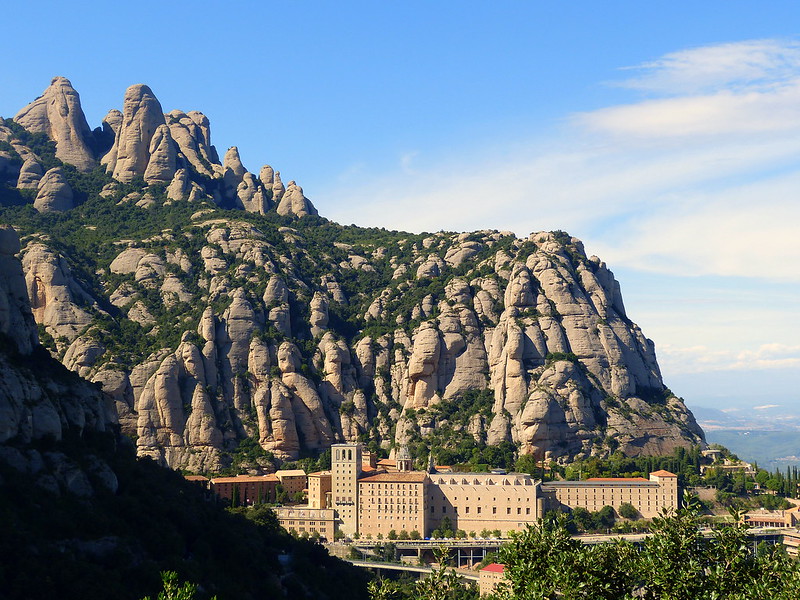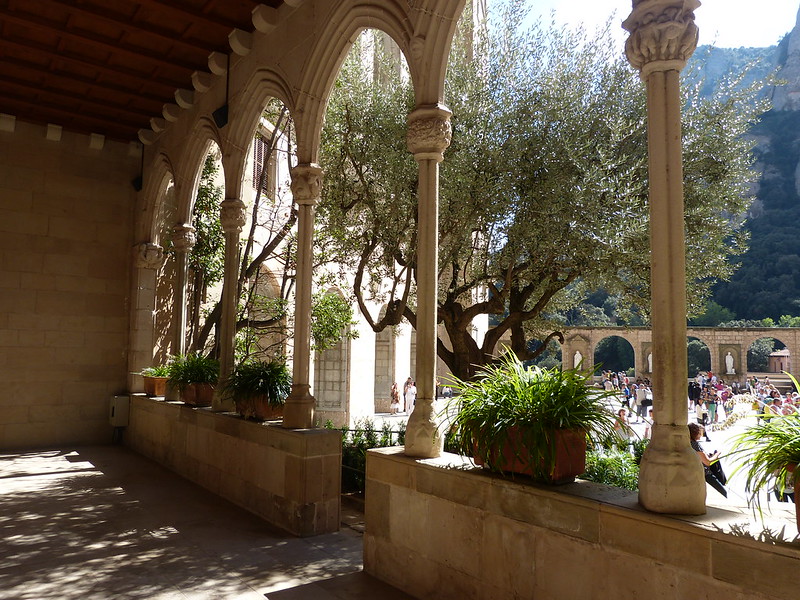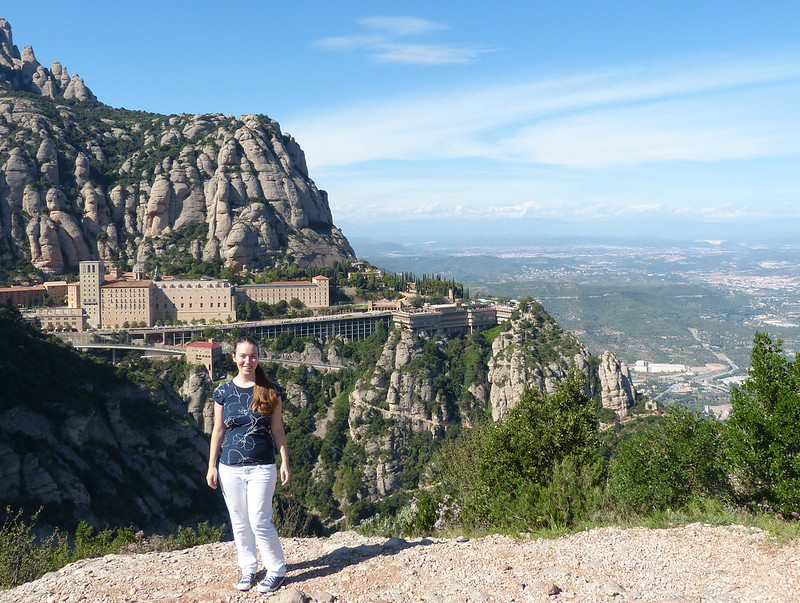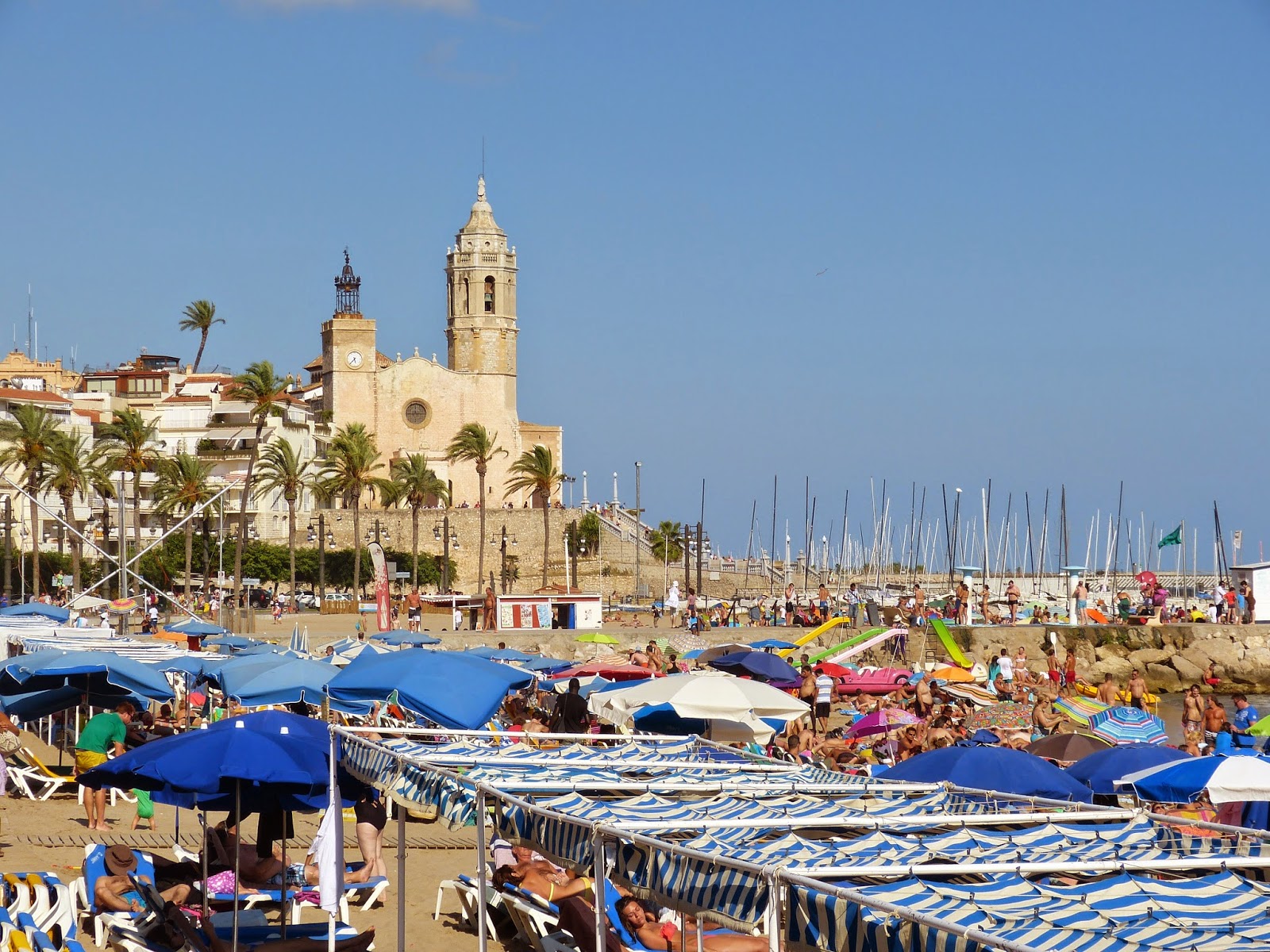On a random weekend in October I decided to take a last-minute bus to Zaragoza, because for as much as Barcelona is exciting and full of surprises, I also want to explore other parts of Spain. Zaragoza is the main town of Aragón, the region to the west of Catalonia. Situated halfway between Madrid and Barcelona, Zaragoza is not a touristic town, but it harbours great treasures, especially if you like architecture and history.
The bus ride went smoothly, also because I had the chance to admire the Catalan countryside and the desertic area between Lleida and Zaragoza. There were absolutely no villages, no trees, no signs of human life in this part of Spain, and I also enjoyed a sunset that seemed to come straight out of a Western movie. I was surprised because I did not expect a real desert just a couple of hours away from Barcelona. Sure, Castille - the area around Madrid - is arid but it is nothing compared to this.
When I finally arrived in Zaragoza, I found myself in the futuristic Delicias bus and train station, which seemed like a cathedral in the desert. Too impersonal and big for a medium-sized city like Zaragoza, I felt a bit intimidated. When I emerged from the tunnels of the station it was dusk, and the landscape around me was surreal: white ramps leading to nowhere and glass buildings, plus no hints of where the town centre was. The following day, before taking my bus back to Barcelona, I took a picture of this strange area of the town by daylight.
 |
| Futuristic buildings near the Delicia bus and train station |
The main square of Zaragoza, Plaza de Nuestra Señora del Pilar, is considered one of the most beautiful in Spain. By night it's magic, it's lit and the atmosphere is great. The cathedral, built on the site of an appearance of the Virgin Mary on top of a pillar (hence the name Señora del Pilar), is huge. Inside you can see people kissing the famous pillar.
 |
| Church of Nuestra Señora del Pilar |
Zaragoza struck me as as a lively city: at dinner time everyone's out for a caña (a beer) and a few tapas, while during the day flea markets make the atmosphere cheerful.
 |
| Flea market next to the church of La Seo |
The Catedral de la Seo seems like a regular church, until you turn around the corner and have the feeling that you just switched Spain for Morocco.
 |
| Detail of Catedral de La Seo |
If there was one thing that I absolutely wanted to visit in Zaragoza was the Aljafería palace, the former siege of the Aragonese kings and an outstanding example of mudéjar architecture, which is the style that was born from the joint tastes of the Muslim and Christian inhabitants of this part of Spain. I really enjoyed my visit to the palace: even though it is not as elaborate and beautiful as the Alhambra in Granada, it is well worth a visit. Moreover, I have always been fascinated by the Catholic kings, "los reyes católicos" as they call them here in Spain. Isabella and Ferdinand kept moving during their reign, but the Aljafería palace retains their crown room. The symbols of the joined kings of Castille and Aragon, a yoke and a bundle of arrows, is everywhere in the palace. Originally built in the 11th century when Zaragoza was part of the Muslim kingdom of Al-Andalus, in many parts it is a Moorish palace, not much different from the ones I visited in Marrakesh or Andalusia.
 |
| Door leading to the prayer room in the Aljafería Palace |
The tourists here were mainly Spanish, even though the Aljafería Palace is, together with other buildings in Aragón, a UNESCO World Heritage Site.
 |
| Courtyard of the Aljafería Palace |
Of course there are corners of Zaragoza that have nothing to do with mudéjar architecture or with religion. To be honest, I found it a rough town in some backstreets. It was there that I snapped some pictures of some cute graffiti that looked like it was made to cheer up and valorise this area of the town.
 |
| Graffiti in Zaragoza |
 |
| Some more graffiti art in Zaragoza |
My trip ended with a bag of "frutas de Aragón", which I put next to Catalan "panellets" in this picture. "Frutas de Aragón", the ones wrapped in paper, are a characteristic sweet made with fruit confit that is covered in chocolate. You can imagine the taste!
 |
| Frutas de Aragón vs. Panellets |
Would you like to visit Zaragoza? Do you ever take random improvised trips just to explore new areas of a country?
















































